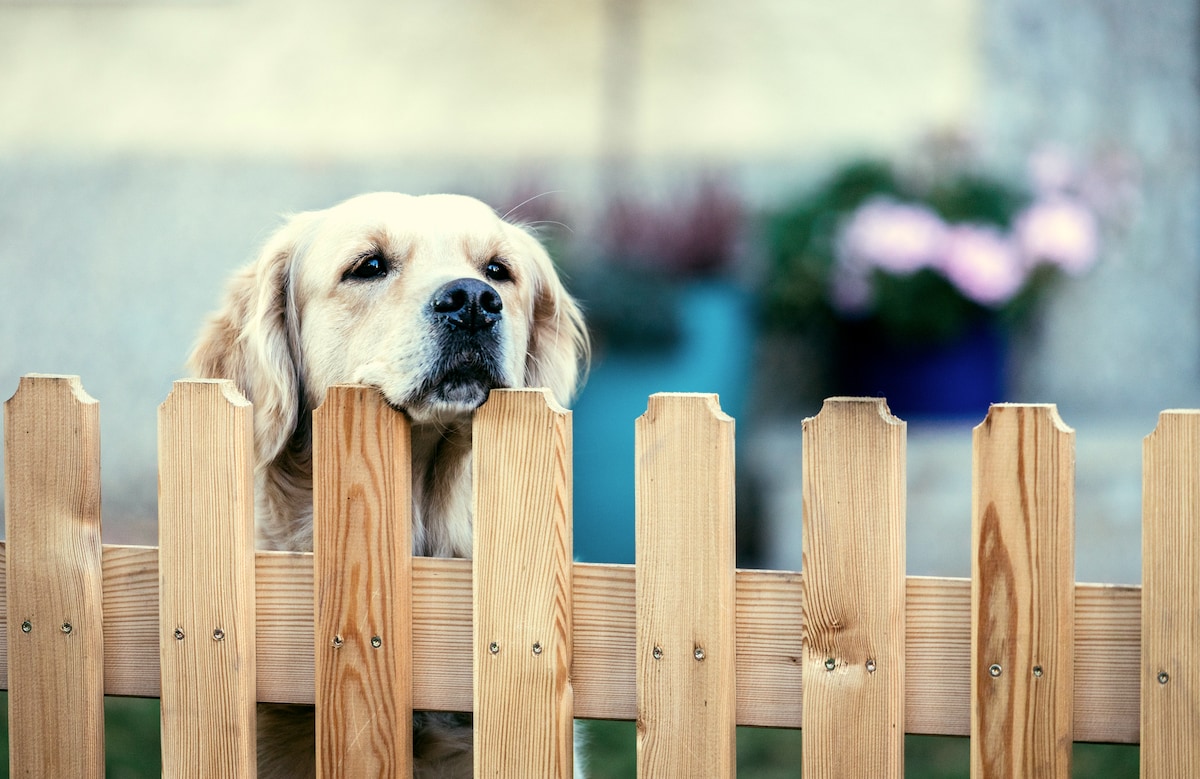One of the main reasons why people consider installing dog fencing in their yards is to keep pets and children in a safe space. You may find beautiful fencing that complements the style and feel of your home while also keeping your pet safe. If you live in a crowded street, a privacy fence will be something that is the best option for you.
It can be hard to provide safe and secured space outside your home for both children and your pets, especially dogs. So do you know how to determine which fencing type is best for your property? In this article, you will learn how to determine that and what is the best fence type to keep your pets safe.
What pet do you have?
When choosing a fence for your pet, consider what pet you have. If you have a big dog, you are not able to install a chain link fence for example. But, if you have rabbits or turtles that could work. There are a lot of types of fences, from vinyl to iron fencing, so keep that in mind. Think well about what you actually need, don’t waste your money on something you don’t need.
How high your pet can jump?
Based on our experience, there are a lot of answers to this question, so think twice. You are the one who best knows how your pet behaves. If you want to keep your pet safe, you will need to choose the proper height of your fence. You don’t want your dog to escape just because the fence wasn’t high enough.
Consider how big your pet is, and is he a jumper. How tall he can jump? If you have a big dog who loves to jump all day, consider installing a bit higher fence. Choose a 6-foot-tall fence for bigger dogs, especially if they jump. A 3.5-foot-tall fence should be plenty for small dogs.
If you have a small pet such as a pig, turtle, or rabbit, you don’t have to worry so much about the height of your fence, the standard fence should work just fine with those kinds of animals.
Spacing between pickets
If you love how spaced picket fences look, and you have a pet in your home, take care of the distance between two pickets. Sometimes, space between pickets can be big, so small to medium dogs and pets can just squeeze and escape.
So how would you determine if your pet will fit between the picket lines? By considering the measures of the distance between your pickets to the width of your dog at his or her broadest point, you may get a pretty fair approximation.
Some fence companies will give you advice on which fence is best for your pets, but we will keep with our list of things to consider when choosing a fence for your pets.
Is it a visual barrier?
For some types of pets, especially dogs, sometimes it is important to have a visual barrier. Many dogs become frustrated if they notice a prospective companion or human on the opposite edge of the fencing but are unable to go beyond it.
You can hear barking on every squirrel or people who are just passing by your yard. If your dog is feeling frustrated, as we mentioned earlier, semi-privacy and privacy fences are the best choices.
Regulations of your neighborhood
Living in the house sometimes can be tricky. Before thinking about installing process of your fence, consider the neighborhood regulations you will need to follow. The best option is to double-check regulations about fencing style, some neighborhoods have their regulation about fencing look.
